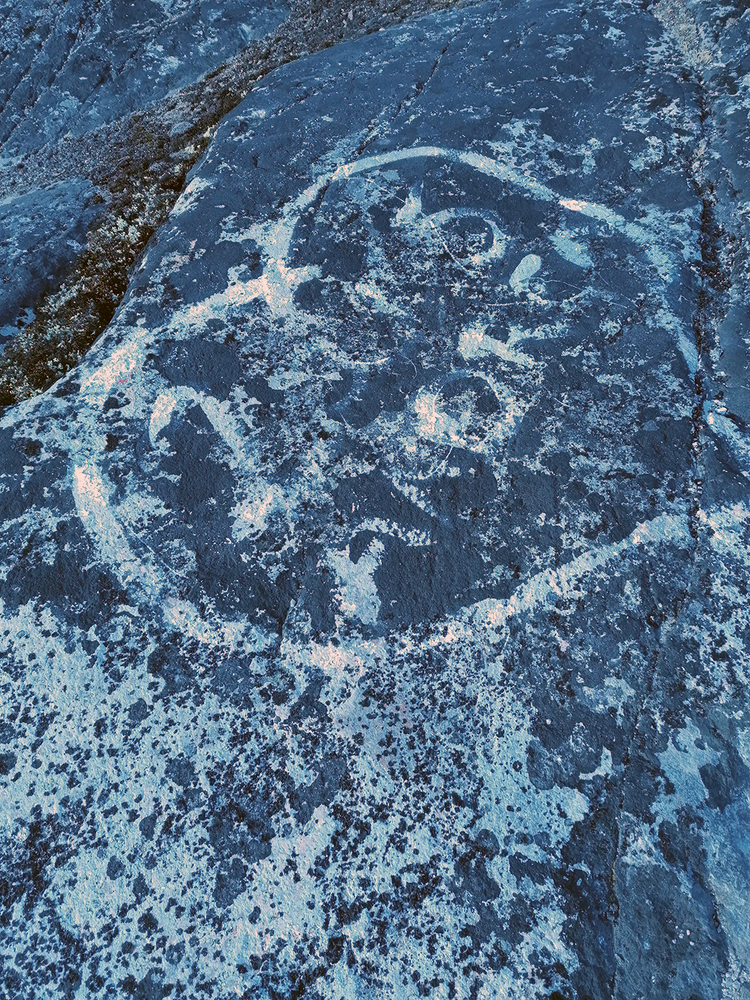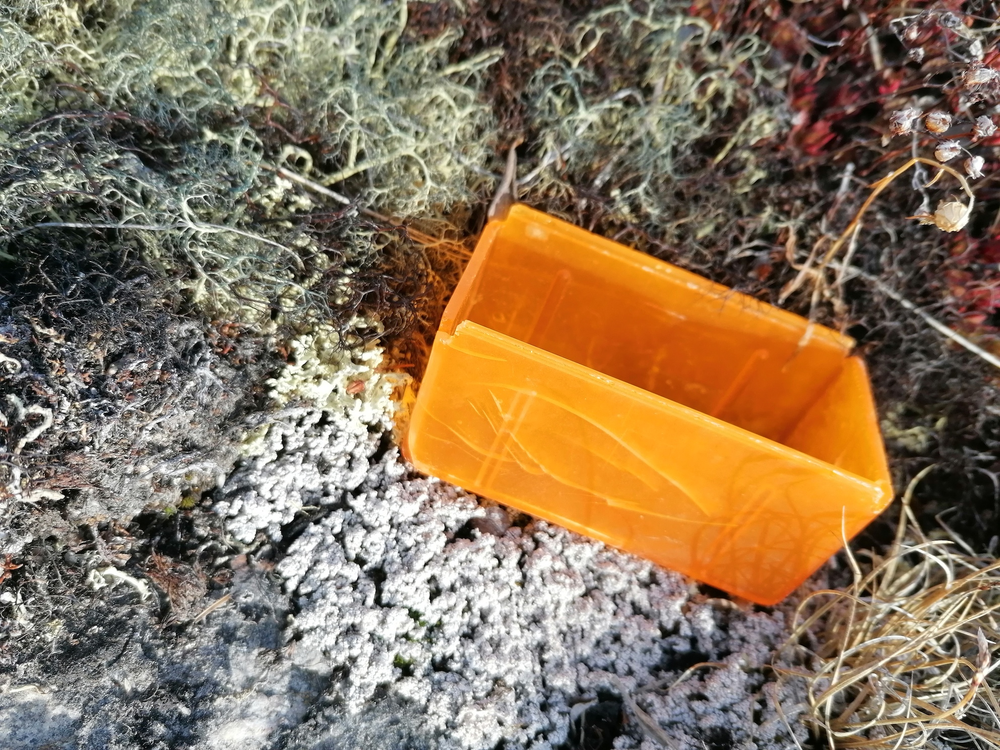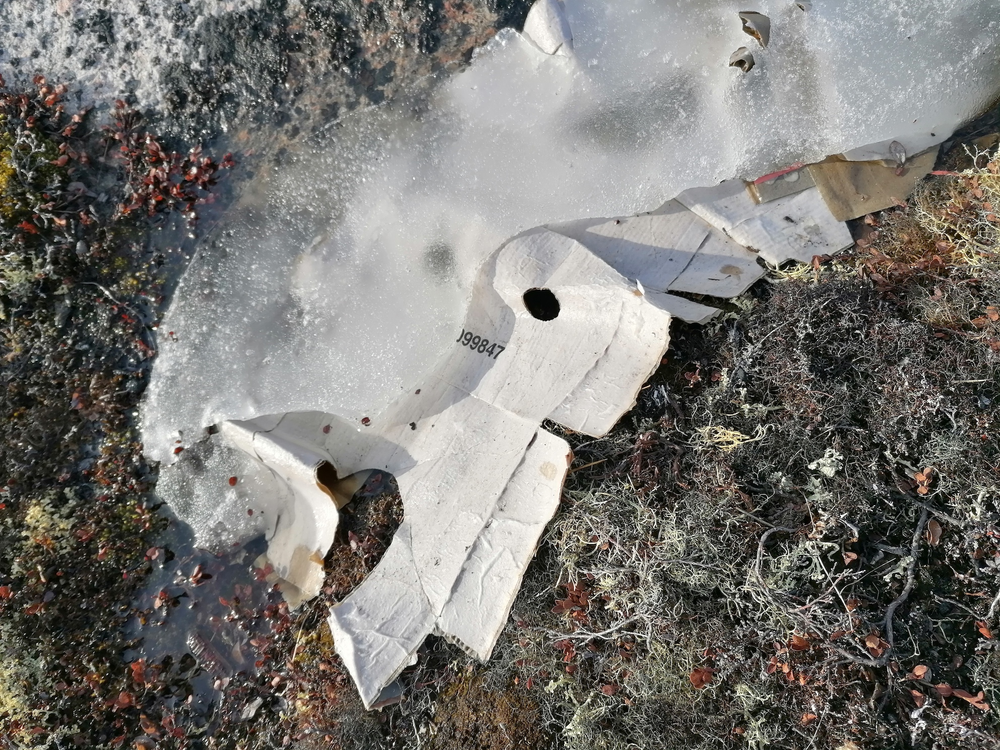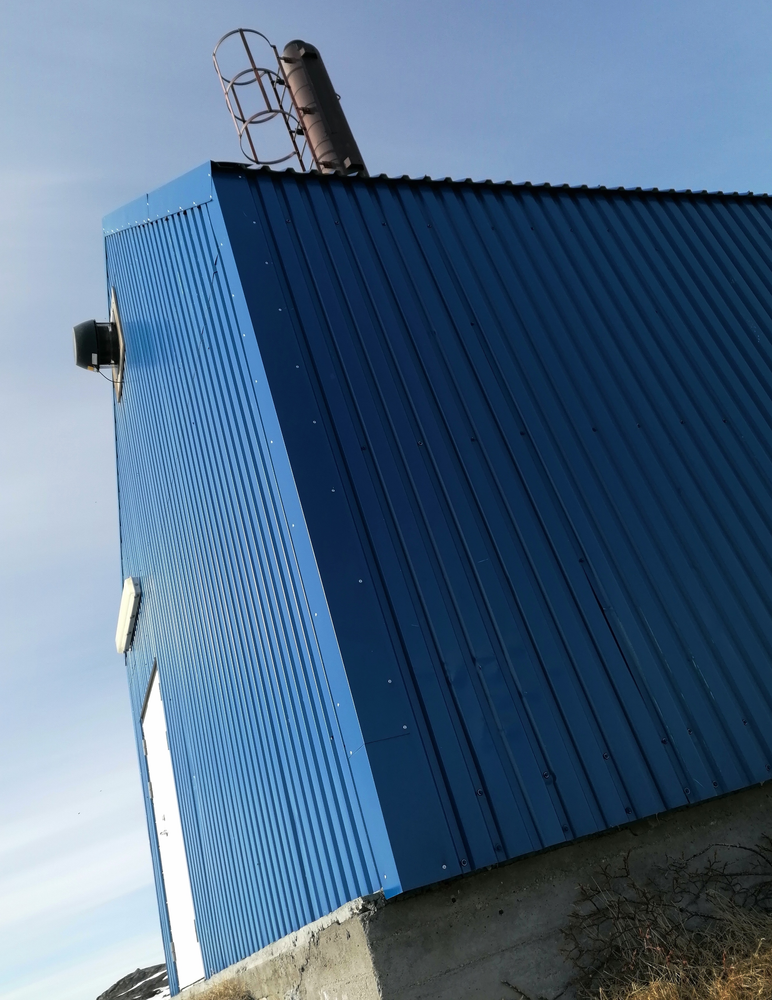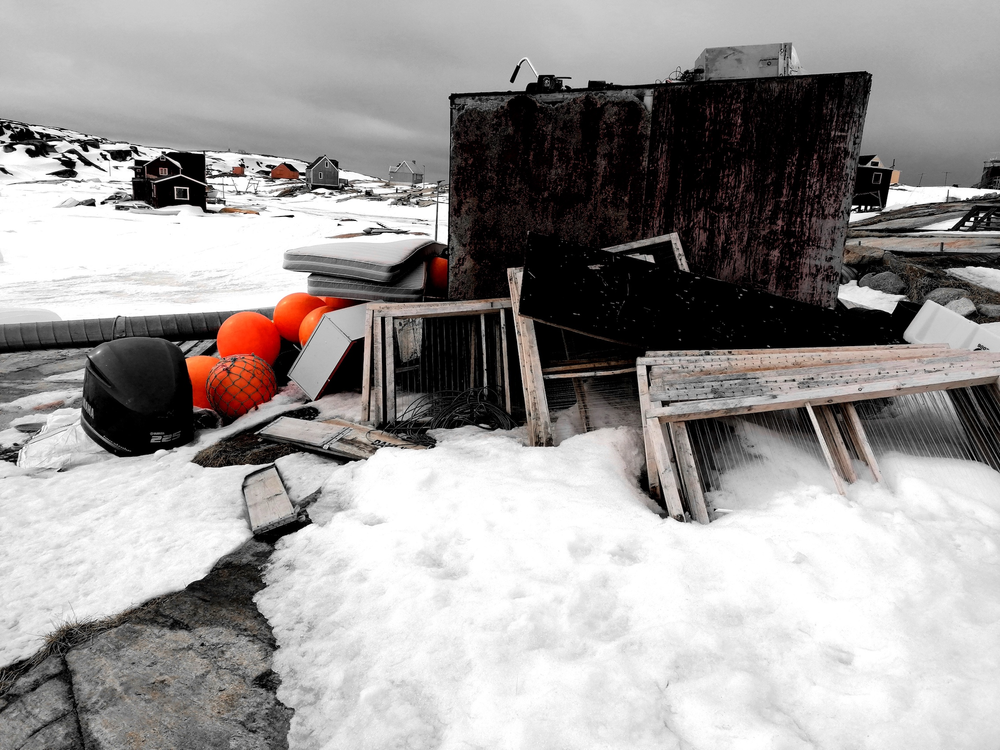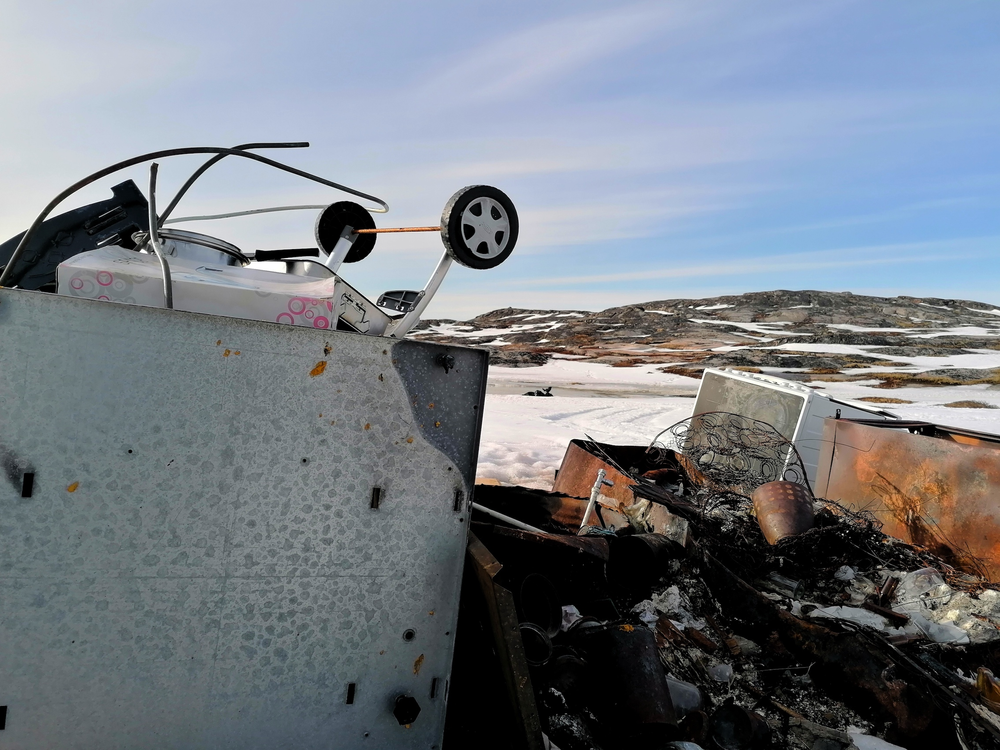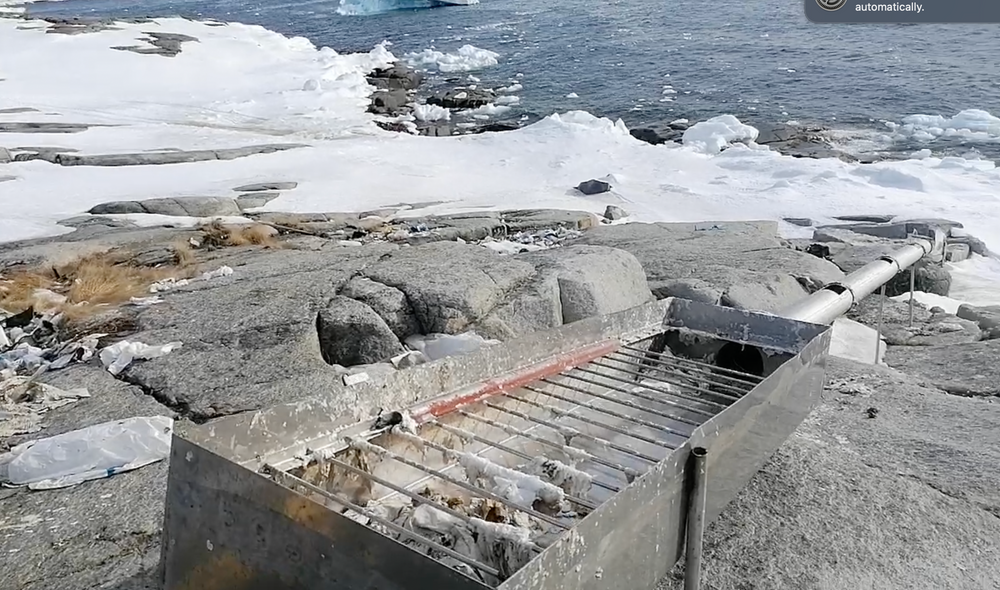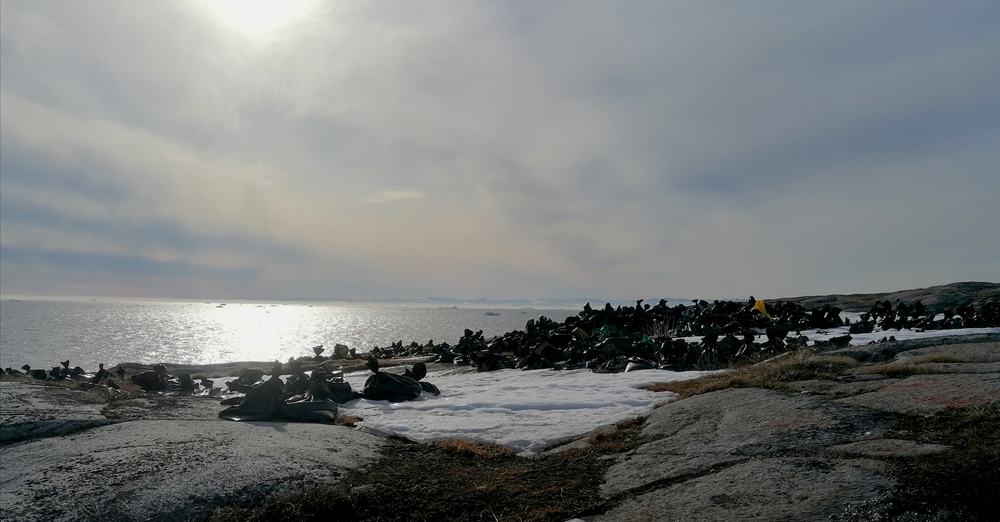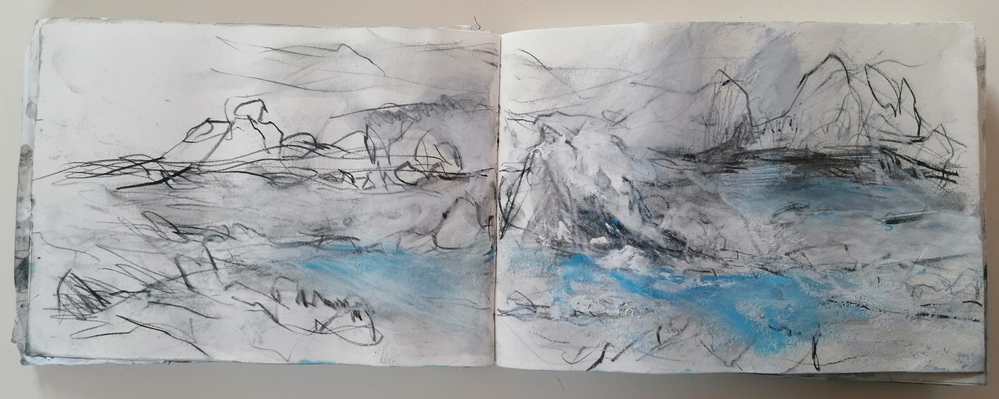Looking the other way
‘With towering icebergs, unspoiled tundra, and unbeatable views of the aurora borealis, Greenland has all the makings of a tourist hot spot'
'A trip to Greenland takes you to one of the planet’s last great wildernesses, a remote land of ice and snow. With otherworldly landscapes and a beguiling mix of Viking history and contemporary Inuit culture, Greenland travel experiences offer you an unforgettable and unique adventure. No matter your interests nor the time of year, you’re sure to find something to take your breath away'.
So say the tourist websites when considering a trip to Greenland...
It's my last few days here in Oqaatsut and the snow is finally melting big time. The small boy next door is delighted to reclaim his bike that has recently emerged from its icy covering; he demonstrates to me how he can ride in and out of the small pool that has now forming from unfrozen snow. He keeps up a flow of conversation, and I smile and talk back in English, which seems to work. Then I set off to wander from rock to rock, squelching through the now exposed patches of moss and mud, skirting round puddles and jumping across the streams of melted ice flowing down to the sea. The disappearance of the snow reveals how much stuff has been hidden and is now being revealed lying on the ground around the houses and hillside.
There is also a lot of dog poo that is beginning to stink. So it seems that the saying you can smell spring coming is true!
I pick my way down to the edge of the sea armed with a sketchbook; on my way I pass the dump with its incineration building constantly emitting a low hum of machinery.
Incineration building
Around it lie the discarded and broken items that once belonged to Oqaatsut’s inhabitants. There is masses of it. Some is waiting to be burned, some burned but left in piles, but a lot - old washing machines, fridges, bits of machinery, toys - just can’t be incinerated.
Oqaatsut landscape with rubbish
So what happens to it? It’s not the fault of the 24 or so people who live here – what are they supposed to do? What do you do with you live in a small settlement where there are no roads and the only method of transporting large quantities of stuff is by boat? Does it just lie here on the rocks beside the sea as slowly more and more accumulates? Does it get collected and taken away? Maybe it’s okay in the winter (well actually it’s not) when there is so much snow it’s covered up - out of sight out of mind, but now… ?
Anyway, I find a place away from the rubbish and human odours, and settle down in the sun to draw a few more of those drifting icebergs, but there beside me, floating in a pool of melt water, are tiny polystyrene balls used as packing.
Later, when I get back to the house, I start googling about waste in Greenland.
According to one report I find (https://global-recycling.info/archives/5971)
In 2007, the Danish-Greenlandic Environmental Cooperation proclaimed that “we now have a new waste incineration plant, which means that we no longer have to landfill flammable waste, but can burn it and get heat from garbage”. In the new waste incineration plant in Sisimiut (the second largest town in Greenland, with approximately 5,600 inhabitants), 'construction waste is mixed with household waste into a homogeneous mass to burn'. In Nuuk, Greenland largest city and the capital, with a population of 17,635, there is a twelve-year-old incineration plant, and in Qaqortoq, a town in southern Greenland with a population of 3,050, there is a three-year-old facility. Similar plants have apparently were also provided for Aasiaat (3,069 inhabitants), Maniitsoq (2,534 inhabitants) and Ilulissat (4,670 inhabitants). The 2007 report states: “Within a few years, there will be incineration plants in all the larger towns”. How far has that promise got I wonder - and what about the smaller settlements?
Gunvor Marie Kirkelund, Environmental Engineer at the Technical University of Denmark, suggests that because of the limitations of these incineration plants material was still shipped to end the disposal at hazardous sites in other countries. And despite incineration, “the waste was piling up at a lot of places”, causing emissions, uncontrollable fires or waste spread out by the wind. Maintenance or repairs of the incinerators meant waiting for service personal from abroad and importing spare parts from outside Greenland, contributing to long down periods. In 2018, Naalakkersuisut, the government of Greenland, recognised that many of the small-scale incinerators were substandard, resulting in a 30 percent deficit in incineration capacity. (https://global-recycling.info/archives/5971). Maybe this explains the piles of waste in Oqaatsut.
Then I find another report: 'completed in 2021 and/or 2022, two new waste-to-energy plants are expected to be operating in Nuuk and Sisimiut, Greenland’s biggest towns. Each plant with an investment of 200 million Danish Crown or about 26.9 million Euro will have a capacity of 60 tons daily to treat local waste or from the rest of the island. The concept is new, as the production of district heat is centralised on two plants, replacing about 20 incinerators all over the country”.
Yes... but what about ones for small settlements? There is no mention of these.
Jens Romerdahl, a senior technical, environmental and housing consultant states: “We burn as much as possible for the benefit of heat production in Greenland instead of sailing it over the Atlantic.” Which sounds good, although I'm not sure what this does to air pollution.
Romerdahl also points to the uneconomical transport of recyclables to Europe - a 4,000 km journey by ship and further transport by road. 81 percent of Greenland’s area is covered by ice, roads connecting towns and settlements are very limited.
According to a 2018 “Analysis of Nordic regulatory framework” report, “Due to its isolation, waste treatment options in Greenland are more limited than in other Nordic states, and little waste is recycled.”
And here I am in Oqaatsut, standing looking at the dump.
In addition to being eyesores, dumps pollute the ground; plastic, paper and polystyrene are carried by the wind, to lie on the rocks and pools of water (I’ve seen it). It probably ends up washed into the sea - which is the local source of drinking water.
But what about the poo? I hear you cry. Yep, what about it? Just above the settlement there are bags and bags and bags of it lying on the rocks. There are no flushing toilets in Oqaatsut and so there is no other option here – we poo into black bags, and when they are full enough, remove them, wind a metal strip round the top of the bag to seal the contents in, then take them out and leave the bags next to a rock or in a metal bin. Every few days these are collected and taken to the dump for disposal. Nice job.
Now the snow has melted I can see just how much there is, and because the ground is thawing it’s beginning to smell. Not far from where I am walking there’s a metal shoot running down the rocks, stopping just short of the sea.
Every so often the guy in charge of waste collection goes up there, cuts off the top of each black bag, and tips the contents down the slide into the sea.
Okay, this is a small community, but at the moment there are a hell of a lot of bags sitting waiting out there.
I guess it can be argues that it’s biodegradable. BUT .... the sea is the local source of drinking water for the settlement. I’m not sure from where the seawater is extracted that goes to the desalination processing plant on the harbour side of the settlement that I've been collecting everyday for drinking and cooking, as do everybody who lives here. However, it's probably sucked up from pretty near the harbour just around the other side of the peninsular - which is not that far away from where I am standing looking at the poo bags and the metal shoot. I start to feel queasy.
A bit more googling and I discover that apparently humans produce up to a pound of poo per day (not including the pee), and human faeces take about a year to biodegrade. What about all the medicines we digest and poo out, and the nitrogen and pathogens also in our poo? More googling ... I discover that human sewage introduces 6.2 million tons of nitrogen into coastal ecosystems around the globe every year. There is an alternative - it could be processed and used for manure and in some part of the world this is done, but I’m not sure that this system has reached Greenland.
However, the main problem is the plastic. Research shows that Greenland and Barents seas contain 95 percent of the Arctic’s plastic and the Barents Sea is a major fishery for cod, haddock, herring and other species. The fishermen (I haven't noticed any women out fishing, but there again I might be wrong) bring their catch of halibut into the harbour for processing in the local fish factory. There is probably a lot of discarded line and net and fishing gear that gets discarded or lost overboard. I’ve certainly seen this in Shetland so I can’t believe that it doesn’t also happen here, unless the fishermen here are super conscientious. How is the plastic affecting the animals in the sea - and us?
Once plastic enters the sea, it has no boundaries – waves and storms can carry plastics to even the furthest reaches of the ocean, where they accumulate into large gyres on the high seas or become embedded in shorelines and delicate coastal ecosystems; they’ve even been found on uninhabited islands. After some months or years at sea, plastic breaks down into smaller and smaller pieces, battered by waves and storms, eventually to sizes smaller than a grain of sand. This makes retrieving plastics from the ocean almost impossible.
It is estimated that marine plastics are contributing to the death of more than 100,000 marine mammals every year, from entanglement and injury to ingestion and toxic contamination. And then we eat sea food that has ingested these plastics that we have allowed to enter the sea ...there is an irony in this.... Most plastics are still not biodegradable, and when plastics and microplastics end up in the environment, they attract micro-organisms, such as harmful bacteria (pathogens), which known to cause human diseases. We eat, drink (and breathe in) these microplastics every day. Plastic products contain chemical additives, of which a number of these chemicals have been linked with serious health problems such as hormone-related cancers, infertility and neurodevelopment disorders like ADHD and autism. Sorry, too much googling and you probably all know this anyway, but it's good to remind ourselves.
This refuge problem is the side of Greenland that visitors don’t often see or think about. By visiting Greenland are they/we/I contributing to/exacerbating this pollution? I start feeling guilty. I’m not sure how to finish this blog post.... so here is a drawing.

